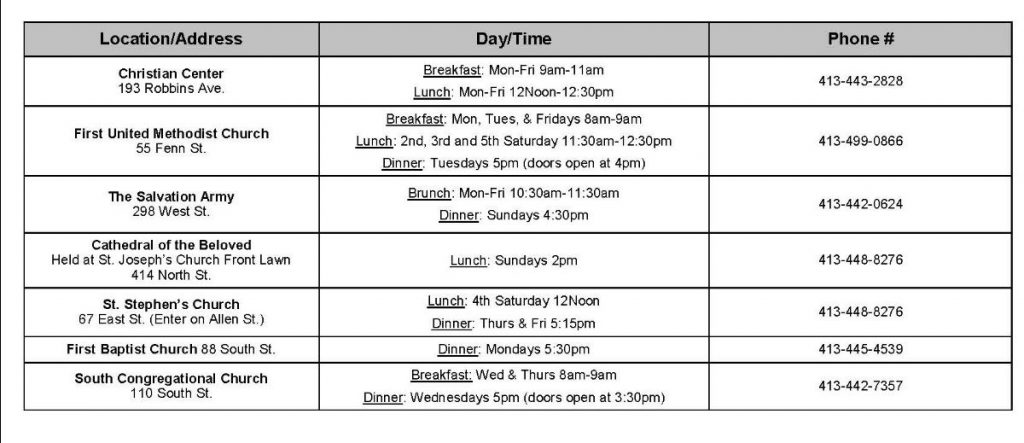December 2019 Newsletter

No Wrong Door for Opioid Safety:
How to Communicate for Impact


Addiction recovery center coming to North Adams
“Four years in the making, the city soon will have its first recovery home for people living with significant co-occurring mental health and substance use disorders.”
https://www.berkshireeagle.com/stories/addiction-recovery-center-coming-to-north-adams,590007?fbclid=IwAR1C0y4vueigblKVEWF0KjcVpa3cDgX0QHfHQ3SGfhr4EvOVaDKSwMa2DVk

Unraveling an HIV cluster
“Residents gather for a meeting at a Lifehouse shelter in Huntington, W.Va. The state is experiencing a surge in HIV infections related to intravenous drug use.”
https://www.washingtonpost.com/national/unraveling-an-hiv-cluster/2019/11/03/66cf4526-f5af-11e9-8cf0-4cc99f74d127_story.html?wpisrc=nl_most&wpmm=1
The Latest Failure in the War on Drugs
By Brandon D.L. Marshall and Abdullah Shihipar
“In September 2018, the rapper Mac Miller died of a drug overdose — a toxic combination of fentanyl, cocaine and alcohol. Three men were charged with distributing the drugs that allegedly led to his death. In July, Tyler Skaggs, a pitcher for the Los Angeles Angels, died from asphyxia. Fentanyl, oxycodone and alcohol were found in his system, and federal authorities are working to determine who provided the drugs that killed him.”
https://www.nytimes.com/2019/11/19/opinion/drug-induced-homicide-overdose.html

Combatting the Abstinence Violation Effect
“The abstinence violation effect (AVE) has been described as the “eff-it” phenomenon. It’s the “I already ate half a box of cookies, so I might as well eat them all” reaction that a person on a diet is prone to. It’s the “I already had a drink tonight, so I might as well black out” thought process that a person trying to address their substance use disorder might engage in.”
https://ireta.org/resources/combatting-the-abstinence-violation-effect/?fbclid=IwAR0EM84aTUdKp0TSV1IHkrLmyLL2NT5NaiTHx-ZFsh0n_oCRmeQRSFfG_eY


Grandparents Assume Parental Roles as the Opioid Crisis Fractures Nuclear Families
By Henna Hundal
“Captain William Anderson of the Chicopee Fire Department never imagined that he would be raising six grandchildren in his mid-60s. The grandchildren, spanning ages four to fourteen, started living with Anderson when his son and daughter-in-law plunged into the throes of opioid addiction.”
HHS Guide for Clinicians on the Appropriate Dosage Reduction or Discontinuation of Long-Term Opioid Analgesics
U.S. Department of Health and Human Services
“This HHS Guide for Clinicians on the Appropriate Dosage Reduction or Discontinuation of Long-Term Opioid Analgesics provides advice to clinicians who are contemplating or initiating a reduction in opioid dosage or discontinuation of long-term opioid therapy for chronic pain. In each case the clinician should review the risks and benefits of the current therapy with the patient, and decide if tapering is appropriate based on individual circumstances.”
https://www.hhs.gov/opioids/sites/default/files/2019-10/Dosage_Reduction_Discontinuation.pdf

Un-burying the Lead: Public health tools are the key to beating the opioid epidemic
By Dayna Bowen Matthew
“On November 1st, the President’s Commission on Combating Drug Addiction and the Opioid Crisis, chaired by Governor Chris Christie, released its report and recommendations for fighting “the worst drug overdose epidemic in U.S. history.” The Report repeatedly underscores the scope and urgency of the nation’s opioid epidemic that is ravaging families and communities in all 50 states. It claims 175 lives daily. In addition to these deaths, other tragic and costly health consequences of this epidemic include unprecedented increases in the incidence and prevalence of addiction, increased hospitalizations and emergency room visits, and a dramatic increase in the number of babies born with neonatal abstinence syndrome.”
https://www.brookings.edu/wp-content/uploads/2018/01/es_20180123_un-burying-the-lead-final.pdf
